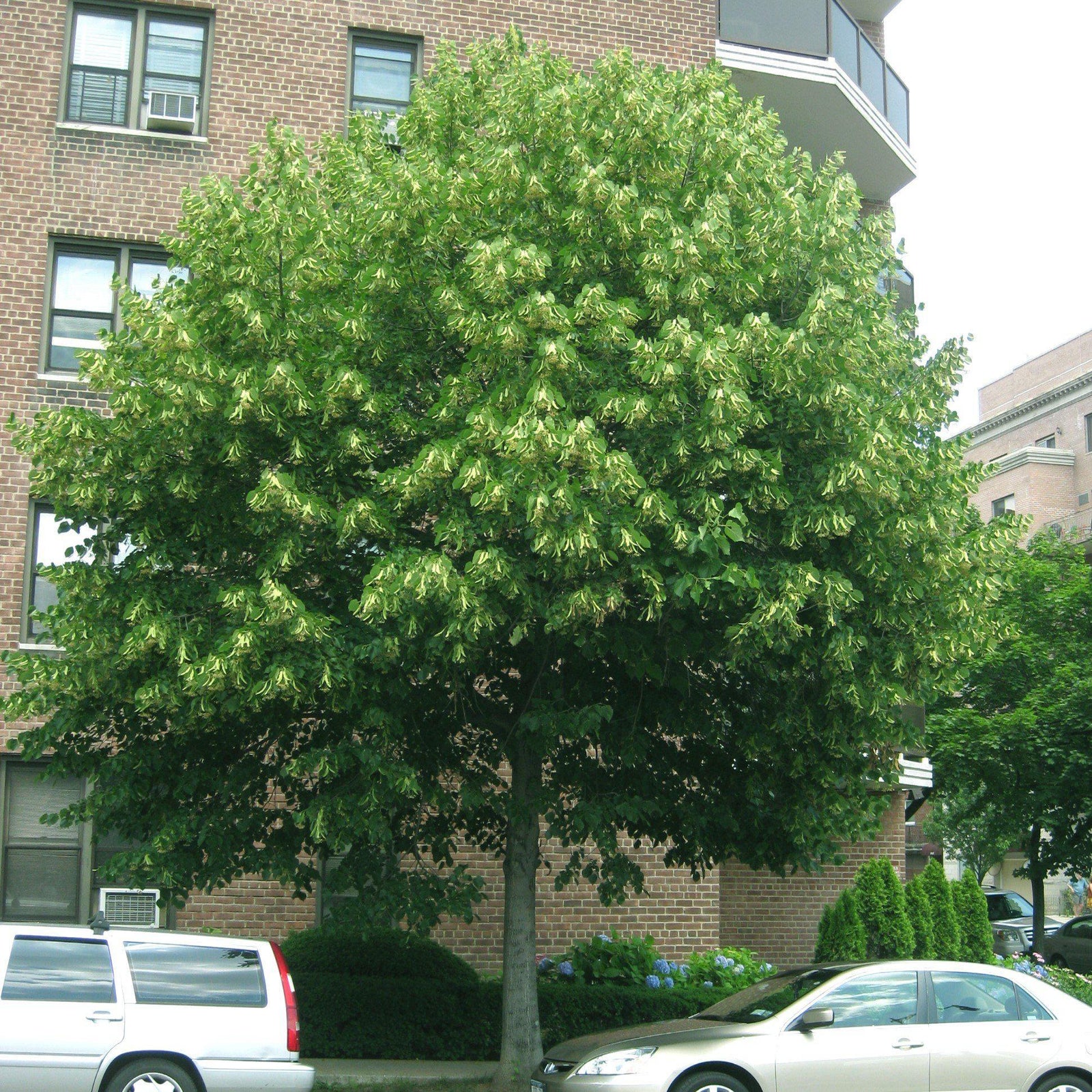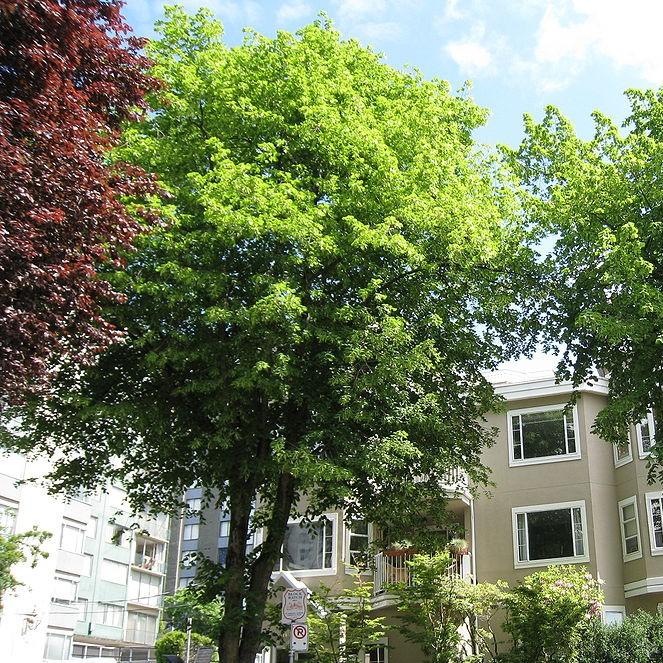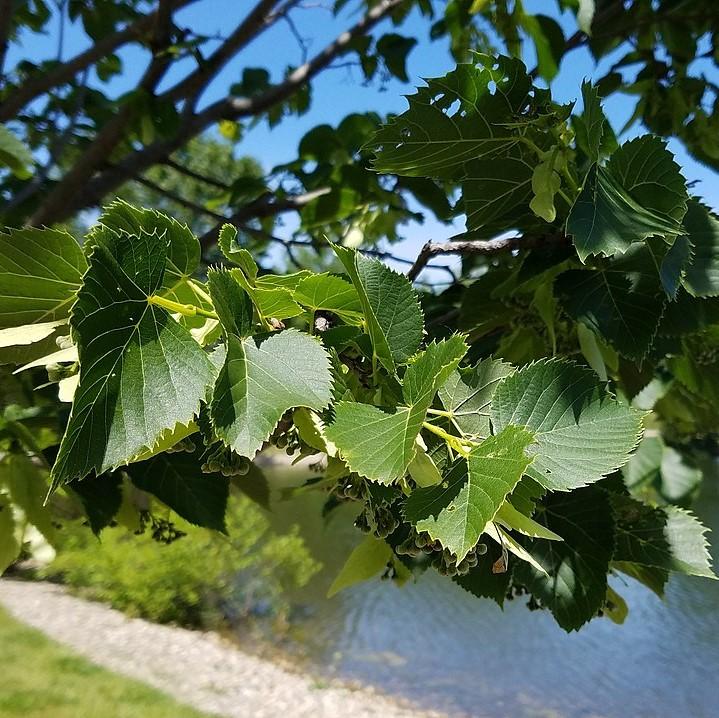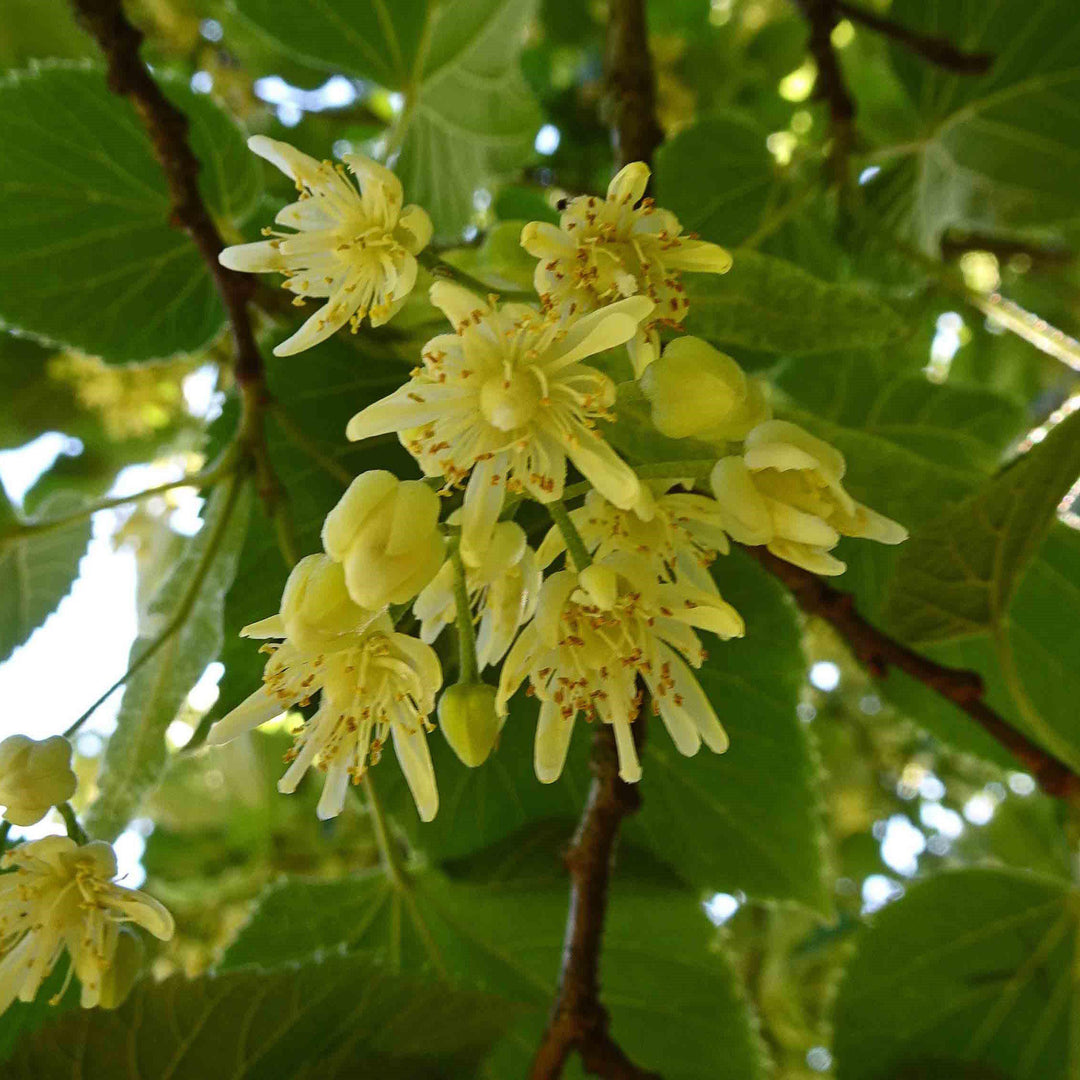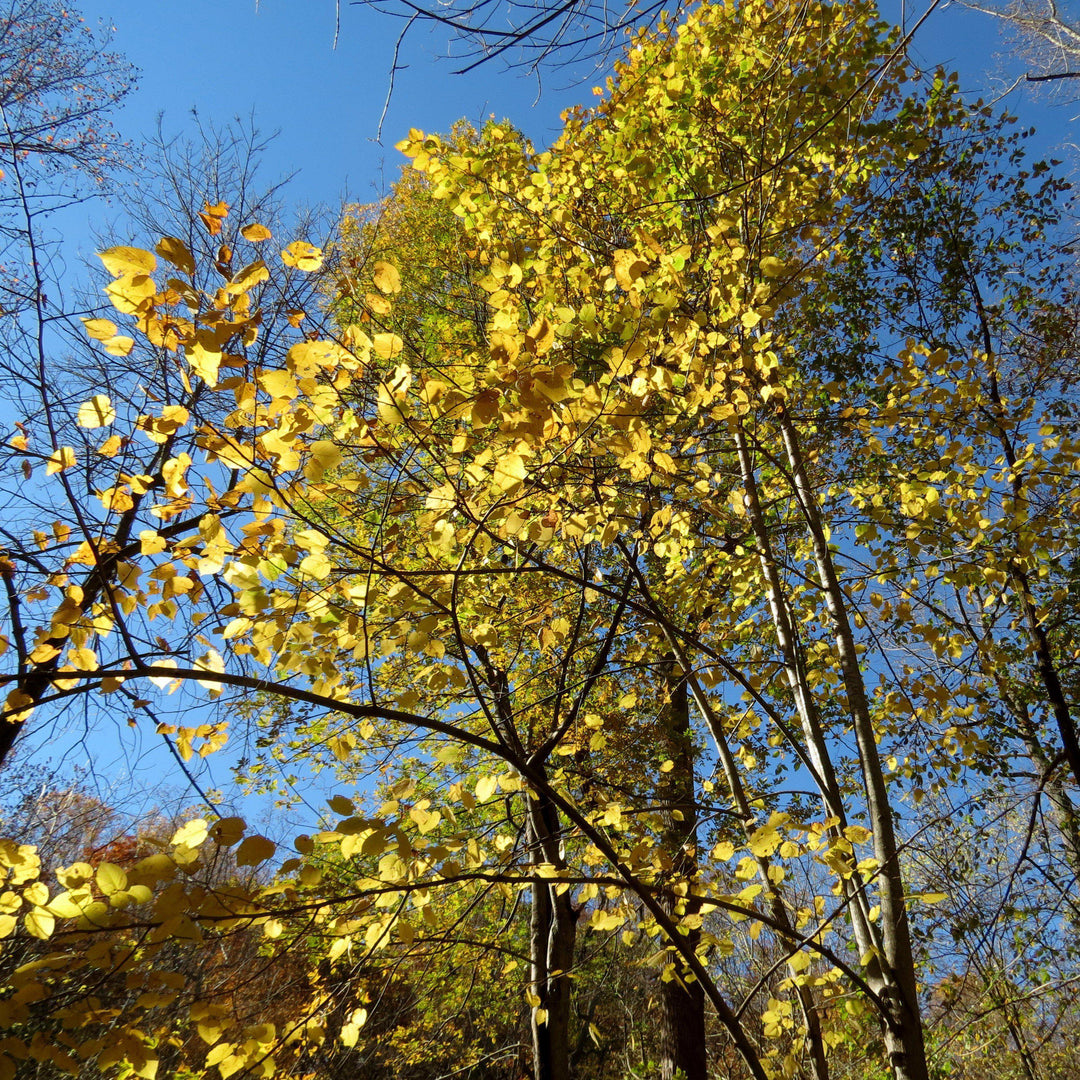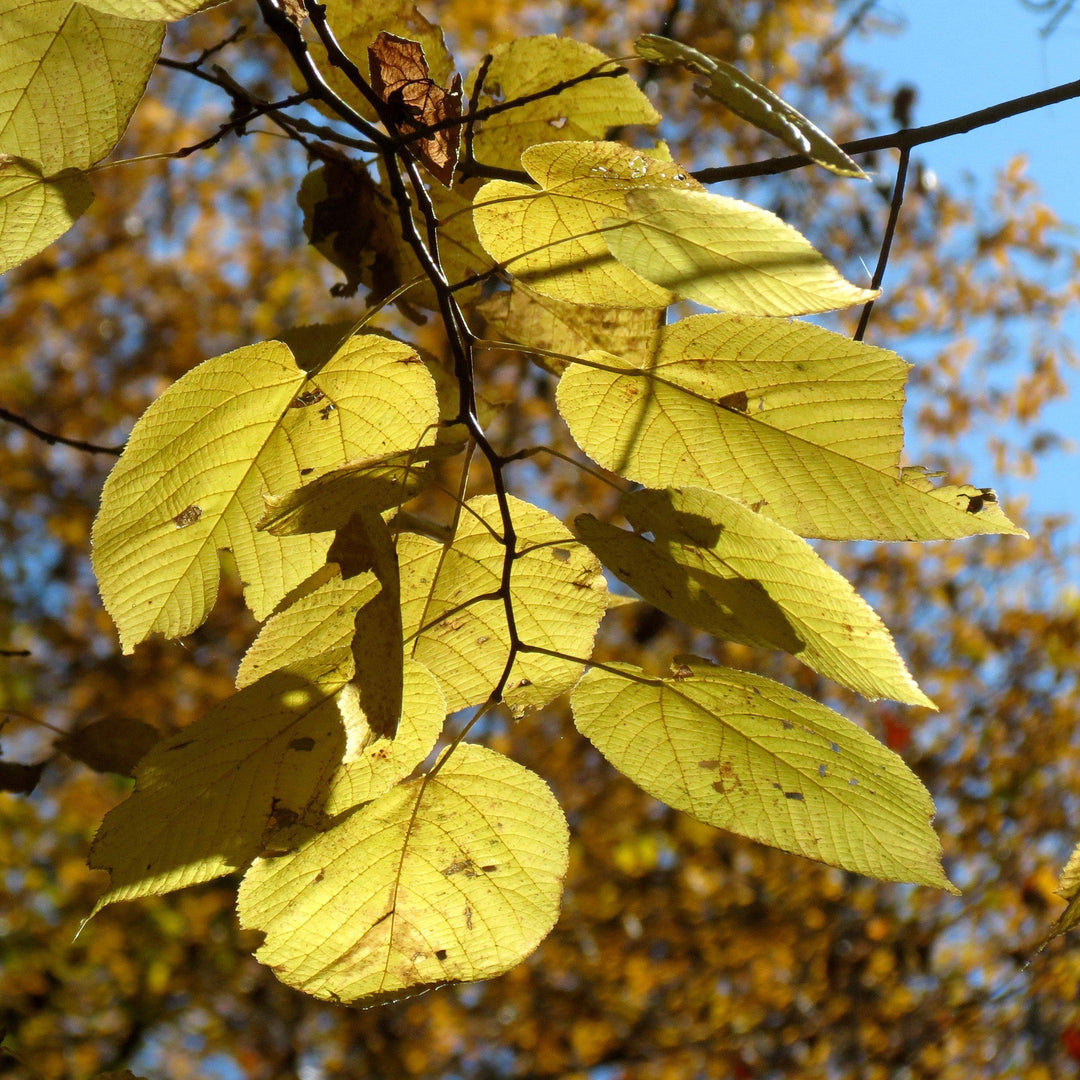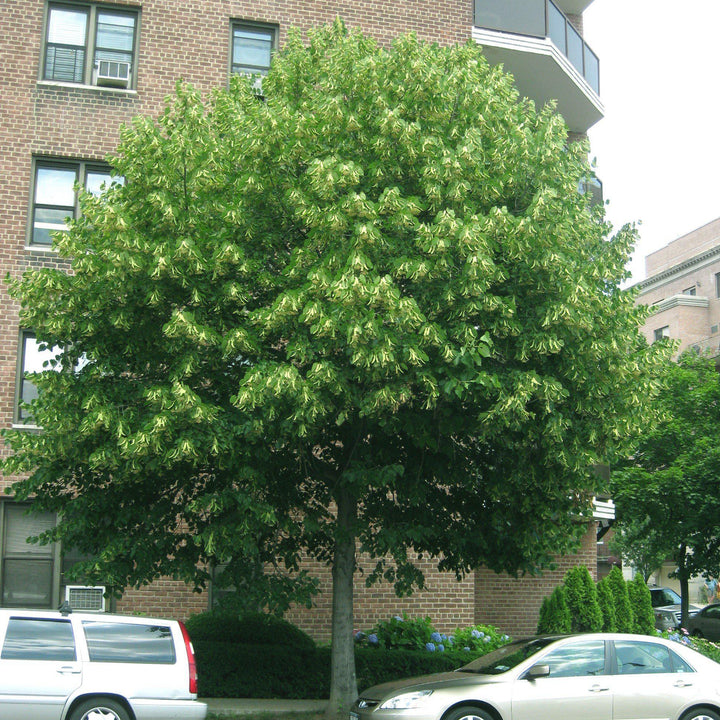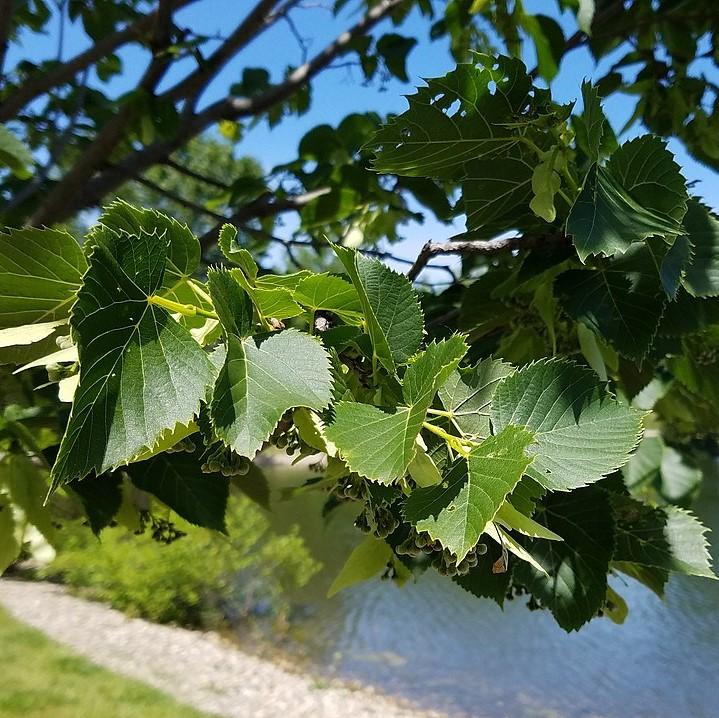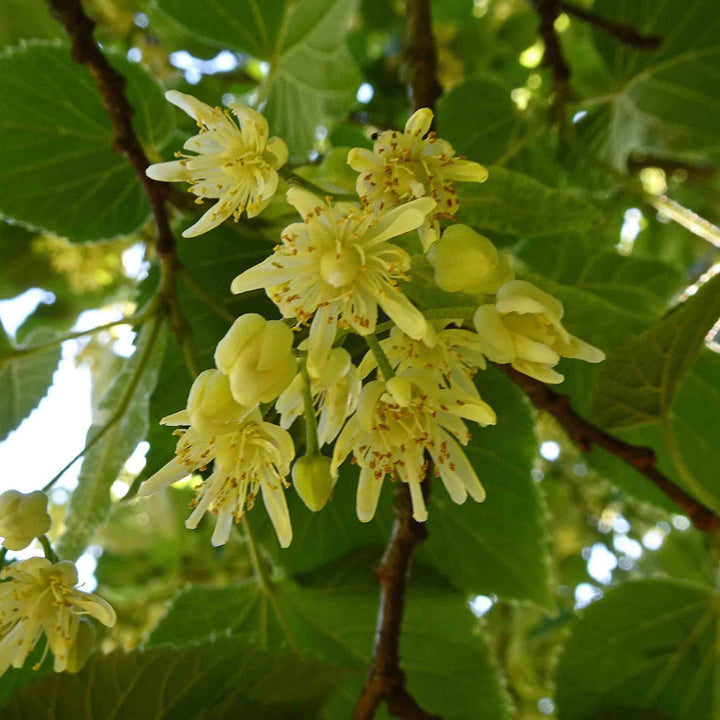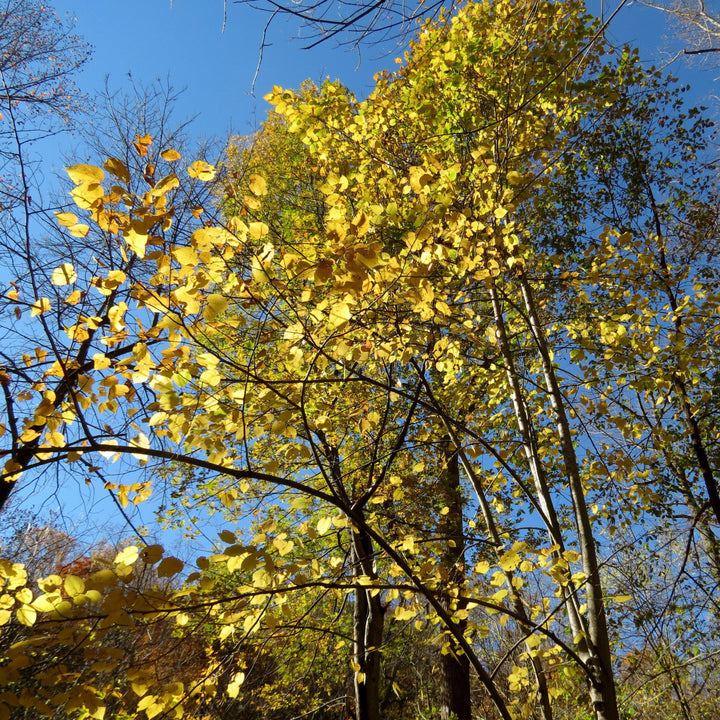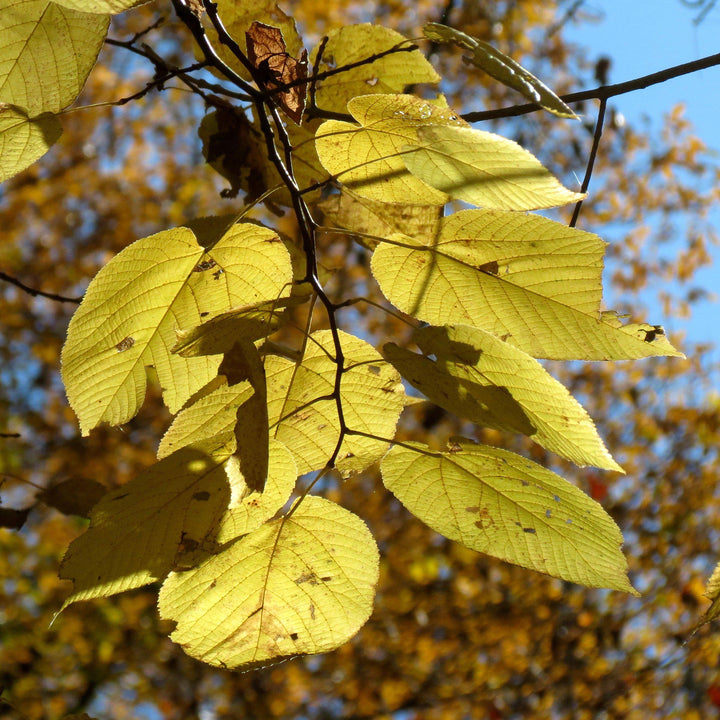Basswood is a tall native deciduous tree with an ovate-rounded crown and noticeable winter buds. The large serrated foliage with paler undersides turn a pale yellow in fall. Fragrant clusters of pale yellow flowers bloom in late spring and give way to papery wing-like seed pods that mature mid-summer. Grows best with loamy, moist well-drained soils. Generally intolerant of air pollution.
In addition to being highly attractive to bees, Tilia americana is a host plant for the Eastern Tiger Swallowtail, Red-Spotted Purple, and Mourning Cloak butterflies.
|
Type: |
|
|
Origins: |
Northeast N. America |
|
Height: |
50’ - 80’ |
|
Spread: |
30’ - 50’ |
|
Spacing: |
40’ |
|
USDA Hardiness Zone: |
2 - 8 |
|
Culture: |
|
|
Bloom Color: |
Yellow |
|
Season of Interest: |
MAINTENANCE NEEDS: Low Maintenance. No serious pests or diseases. Though uncommon, if Verticillium wilt occurs it can be fatal. Potential diseases include powdery mildew, leaf spot, and cankers. Potential pests include borers, beetles, lacebugs, caterpillars and scale. Spider mites can do significant foliage damage in hot, dry periods.
LANDSCAPE USES: Accents or Group Plantings, Borders, Woodland Gardens, Rock Gardens, Ponds and Streams, and Shade Tree.
COMPANION PLANTS: Eastern Redbud, Sugar Maple, Tulip Popular
IMAGES: Photo by Virens (Latin for greening), Tilia americana - American Basswood tree, (2) Wendy Cutler from Vancouver, Canada, TiliaAmericana (7477 (2575057822), CC BY 2.0, (3) Photo by 阿橋 HQ, 椴樹屬 Tilia americana v heterophylla [溫哥華植物園 VanDusen Botanical Garden, Vancouver], (4) Photoset by Katja Schulz, Basswood (1)+(2)
*As plants have ranges in appearance they may not appear as the images shown.


